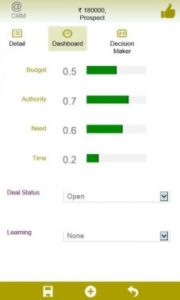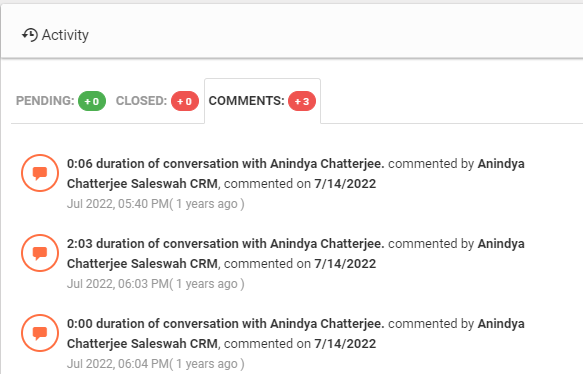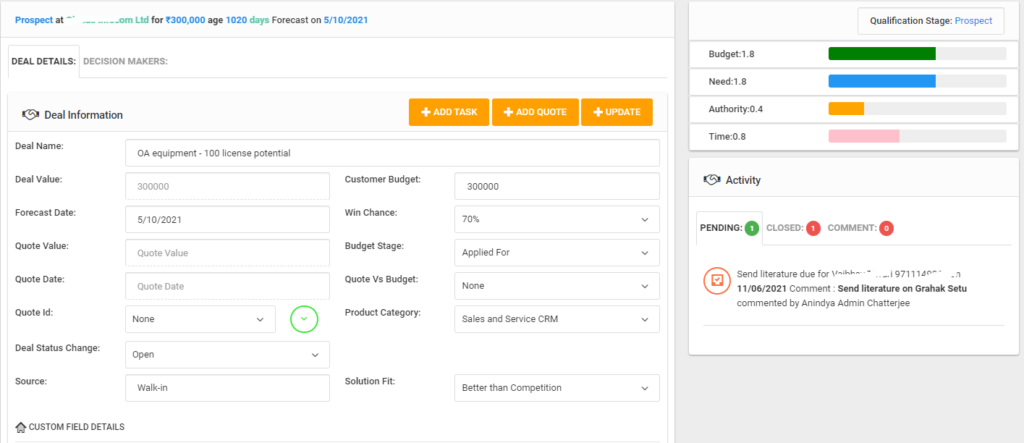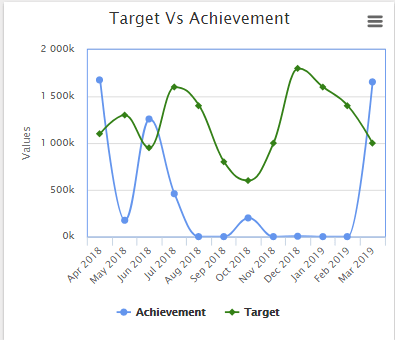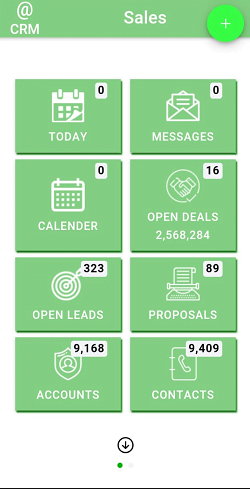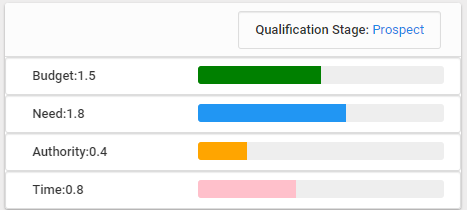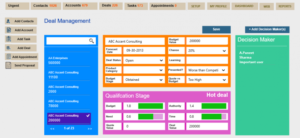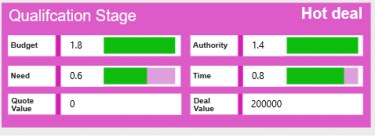A case for valuable sales leads
Sales folks are rarely enthusiastic about sales leads- which is surprising, or not- depending on how you look at it. There is obviously pressure to get to an opportunity before your competition. But, the worst thing for a sales guy is to have to chase dud leads. What are valuable sales leads?
Leads come in all shapes and from all sorts of sources. Most of them have little information other than a name and a number. Some have an email. And most of them result in nothing. Reasons are too numerous to go into, here.
Lead generation to qualification
![]() Marketing generates the most leads for sales. And those are the leads that sales people are the most sceptical about. So, over time, most marketing leads tend to go through at least a level of “qualification”- typically a telecaller who would call the lead and gauge the seriousness or interest in purchase.
Marketing generates the most leads for sales. And those are the leads that sales people are the most sceptical about. So, over time, most marketing leads tend to go through at least a level of “qualification”- typically a telecaller who would call the lead and gauge the seriousness or interest in purchase.
The filtering tends to be quite severe. I have seen as much as 80% leads fall by the wayside and only the 20% or less make their way to sales people to follow up. These bunch have a much better chance of closure.
The goals of the telecaller and the sales guys are – even if slightly, misaligned. The Telecaller is the “man in the middle”- he filters the marketing leads. They differ in their understanding of what valuable sales leads are.
Valuable sales leads
The telecaller – typically- is looking to get the lead to commit to a meeting or follow up call – from the sales person. He counts his success as a number of leads who have managed to say yes. This, needless to say is what the marketing guy wants too. More marketing leads result into a follow up call, better his metrics look.
Now, if poor quality leads make into the sales funnel, the sales metrics of conversion will look bad. Which is why I say, the goals of telesales and sales are often misaligned.
On balance, I still prefer the marketing to fund the tele-qualification function. There is of course scope in sales and marketing teams sitting down together and drawing up pre-agreed crieteria for deals qualification.
Okay, so what are valuable sales leads?
Having talked with hundreds of customers in scores of industries – my only answer is that it depends. It varies from industry to industry and even within the same industry, it varies from company to company. And, I am talking of companies who have actually invested the time to define the threshold of information and interest and how they measure both before passing it on to a sales guy.
Interest in the next step
Interest shown by the lead in being contacted it seems is a big factor. Also, the nature of interest matters too. Some would simply want more information to be mailed, while the others might want a visit from a sales person. I know at least one company where professed interest in meeting a sales person is ruthlessly scrutinized because the sales people are so senior and their time, expensive.
Where telecallers inevitably falter
Almost all companies have a script for the their telecallers. But I have seen most falter in sifting through the tyre-kickers and the door-keepers. Sales does not like information gatherers- though in some B2B enterprise sales processes, information sharing is mandatory as part of a long sales process. Sales also wants to talk to decision makers- and most leads tend to be from folks who are merely gathering data for their bosses. You do not want to be at the mercy of people who are not able to represent your case in from of decision makers- though sometimes you may not have a choice.
Action, level and logical fit
Sales love leads where there is clear action plan and it is obviously set up at an appropriate decision making level at the customer place. If the lead is from a customer or industry segment which is a logical fit- that obviously helps. If it is not, the telecaller should try and establish the need or the pain-point of the lead.
To summarize, valuable sales leads are where meeting is set up at a decision making level where a logical product fit can be established.
Lastly, when you work on a common platform for lead capture, qualification, conversion to deal and deal nurture and close, it definitely makes it easier for all. The lead qualification is a learning process- over a period of time and by capturing data of hundreds of leads qualified – your own criteria for evaluating leads will get better.


